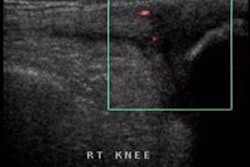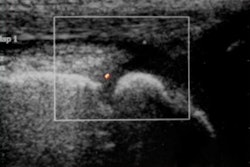MIAMI BEACH, FL - Doctors should be a bit less aggressive when ordering invasive, antistroke procedures for woman, according to a presentation Sunday at the International Symposium on Endovascular Therapy (ISET) meeting. Researchers from Ohio pointed out that the criteria for performing carotid artery stenting or endarterectomy should be gender-based.
Deciding whether an asymptomatic patient requires an intervention for stroke prevention is often determined by measuring the velocity of the blood moving through the carotid arteries in the neck. Carotid duplex ultrasound scanning is "the most common diagnostic test we use in order to avoid the risk of an arteriogram," said Dr. Anthony Comerota, director of the Jobst Vascular Center in Toledo. He is also a professor of surgery at the University of Michigan in Ann Arbor.
In the study, Comerota demonstrated that the peak systolic velocity and the end diastolic velocity -- often viewed as the standards by which doctors will consider recommending surgery -- are 20% to 33% percent higher in women than in men. Downplaying the importance of those figures could result in women receiving the more aggressive treatment, he said.
"It's of particular concern because, compared to men, the standard treatment -- surgery -- is riskier for women and less beneficial," Comerota explained. "Physicians prefer to use duplex ultrasound to determine the risk of stroke because it is noninvasive. We believe that is fine." He noted that arteriograms have a similar risk of stroke in asymptomatic individuals, as does the risk of doing nothing in these patients with suspicious neck bruits.
However, Comerota stressed that the duplex ultrasound data need to be adjusted for women. In his study, in which velocities between 536 men and 402 women were compared, he found that when there was a 55% to 65% blockage of the carotid artery, the peak systolic velocity was 21% higher in women than in men, and the end diastolic velocity was 33% percent higher. Both differences were statistically significant reaching (p = 0.003 for peak systolic velocity; p = 0.013 for end diastolic velocity).
If the blockage was 65% to 75%, the peak systolic velocity was 20% higher for women than men (p = 0.029), and the end diastolic velocity was 26% higher (p = 0.029).
"Carotid artery blood velocities as measured by duplex ultrasound are higher in women than in men at clinically relevant thresholds," Comerota said. "Noninvasive velocity criteria should be adjusted in women to reflect these observations."
In his practice, Comerota said they treat men when duplex ultrasound shows they have a blockage of 60% to 70%, but for women they wait until the duplex ultrasound suggests the blockage is about 80%.
By Edward Susman
AuntMinnie.com contributing writer
January 17, 2005
Related Reading
Multidetector CT angiography identifies stable carotid plaques, January 12, 2005
Carotid stenosis results similar with 2-D and 3-D angiography, January 3, 2005
MRI may determine which stroke-infarcted brain tissue is salvageable, December 3, 2004
Copyright © 2005 AuntMinnie.com



















